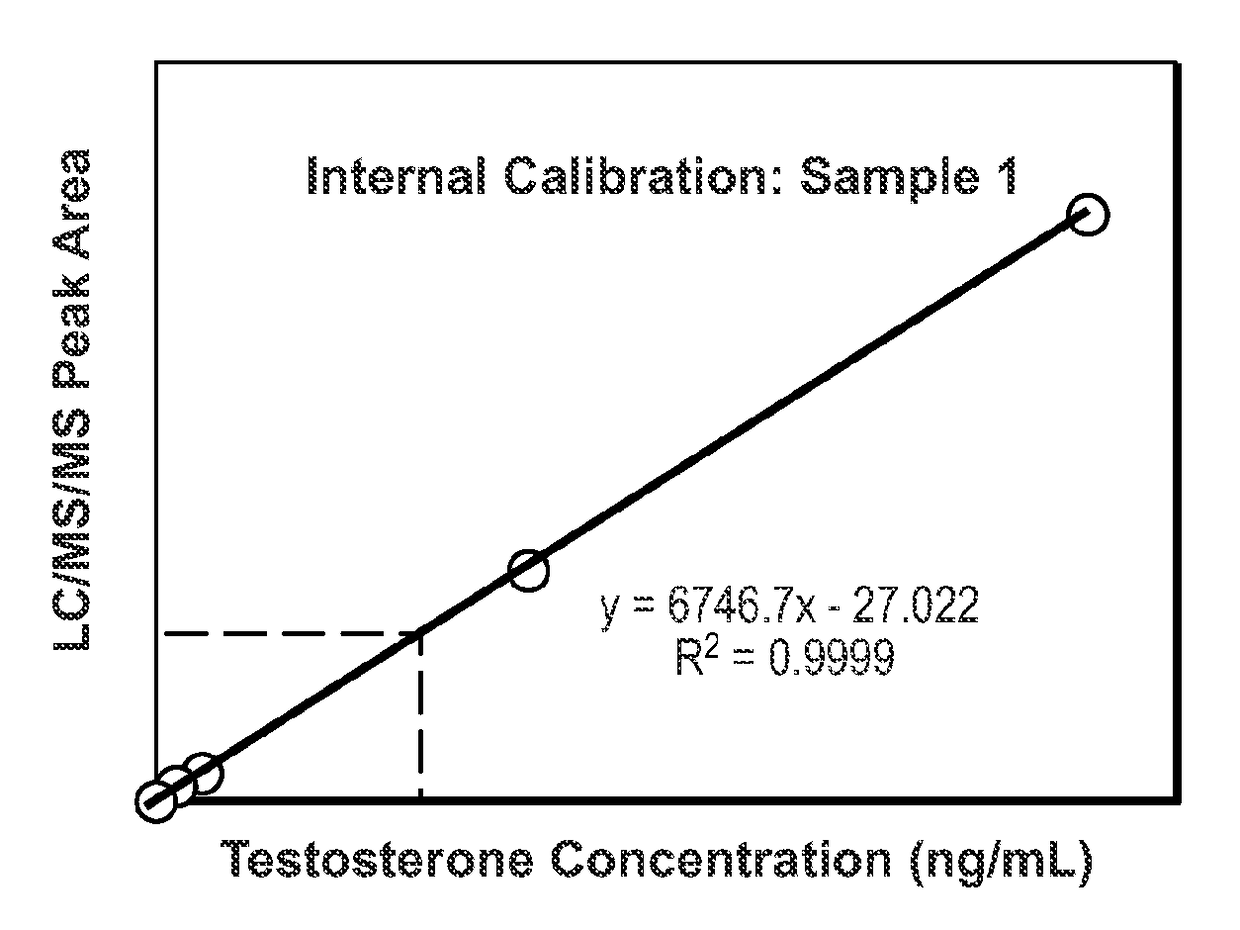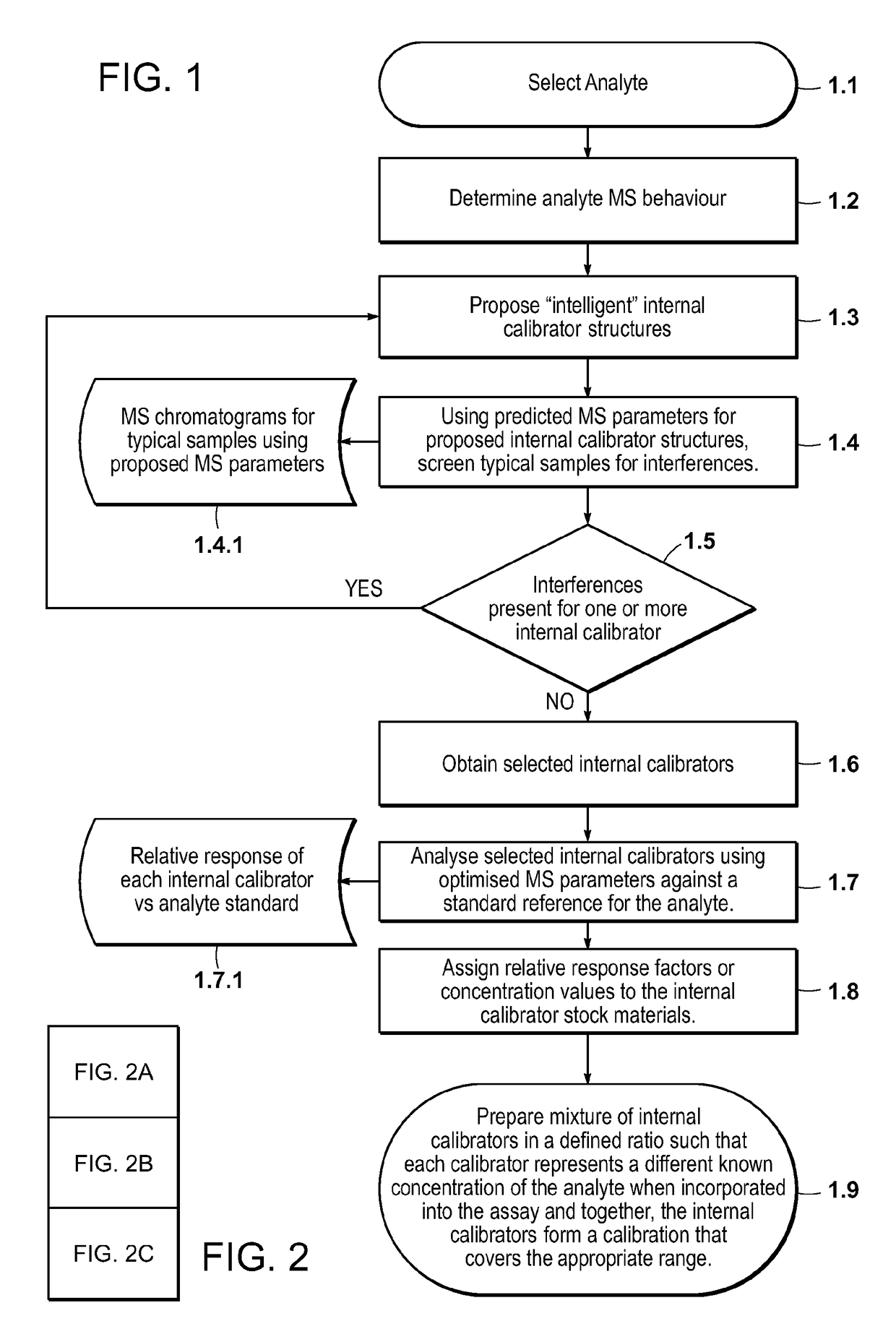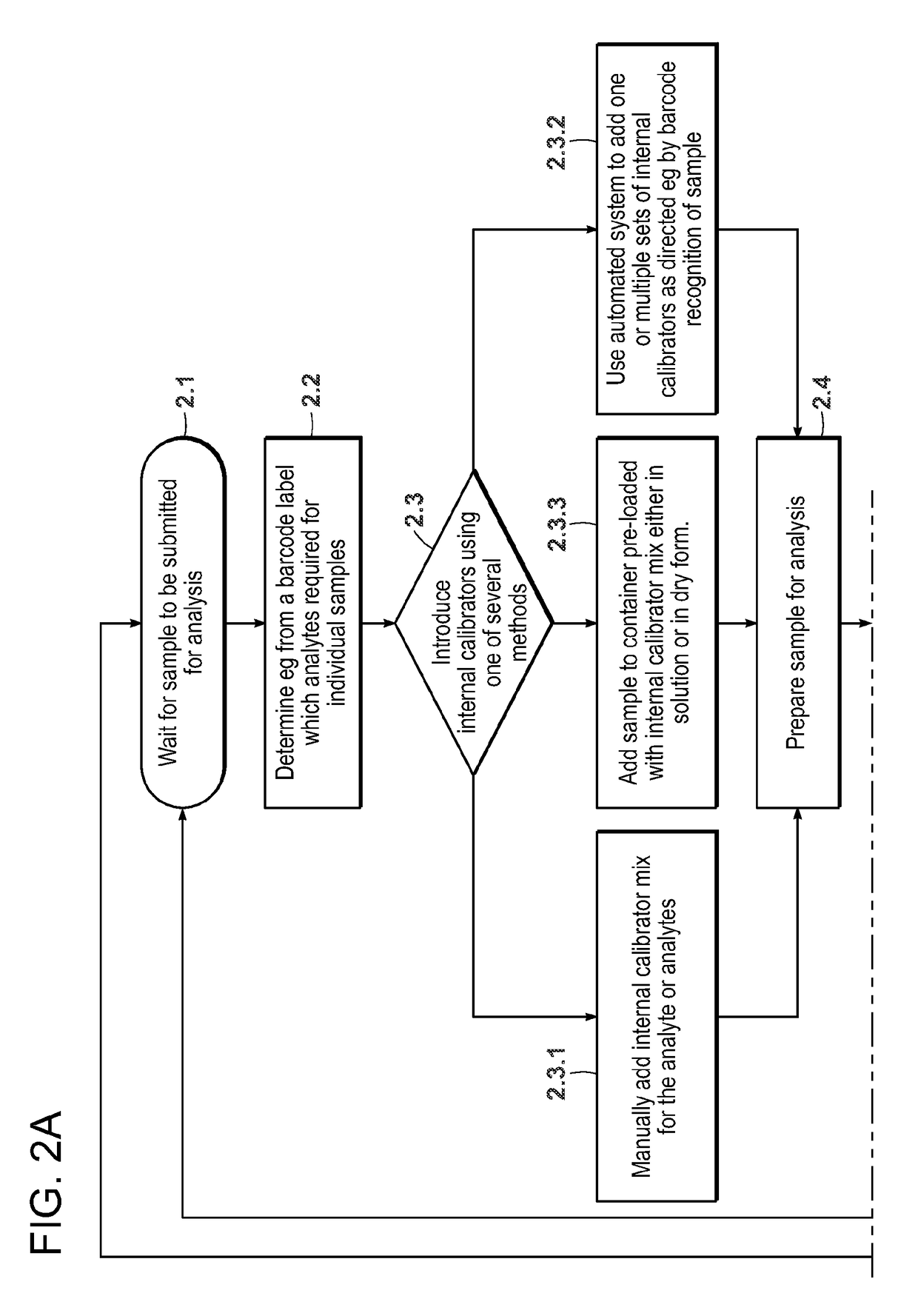Compositions, methods, and kits for quantifying target analytes in a sample
a target analyte and sample technology, applied in the field of mass spectrometry analysis, can solve the problems of poor analytical accuracy, linearity, reproducibility, and difficulty in obtaining target analyte-free matrix, and achieve the effect of indistinguishable
- Summary
- Abstract
- Description
- Claims
- Application Information
AI Technical Summary
Benefits of technology
Problems solved by technology
Method used
Image
Examples
example 1
sis of Testosterone Using Multipoint Calibration in a Single Analysis (Internal Calibration)
[0178]Summary:
[0179]Conventional quantitative LC / MS / MS requires a set of matrix-based calibrators to be analyzed with each batch of samples. This limits the technique to a batch mode of analysis, delays the time to first result and for reagent kits, and requires the manufacturer to source and process analyte-free matrix. This is particularly difficult when the analytes of interest are ordinarily present in the matrix (e.g., endogenous hormones, vitamins, peptides, etc.). This example describes a quantitative LC / MS / MS method where each sample is supplemented with multiple stable isotope labeled analogs of the analyte. Each analog is added at a known unique concentration spanning the analytical measurement range. The analogs and the analyte can be distinguished from each other on the basis of their MS characteristics such that in a single analysis, the responses for the analogs and the analyte ...
example 2
sis of Sirolimus in Whole Blood Using Multipoint Calibration in a Single Analysis
[0243]Introduction:
[0244]In this example, the invention was used to measure the concentration of the immunosuppressant drug sirolimus in whole blood. There is an external quality assurance scheme (the International Proficiency Testing [IPT] Scheme; http: / / www.bioanalytics.co.uk / Results2012.php) for this analyte. The IPT scheme provides three QA samples each month to participating laboratories. The laboratories report the results back to the scheme and the data are processed to determine the mean value for each QA sample and the limits for acceptable results based on the standard deviation of the data. The invention was used to quantify sirolimus in IPT samples and the acceptability of the results was determined based on the acceptance criteria published by the IPT Scheme. Two separate experiments were performed with different methods of adding the internal calibrators as described below. In addition, lo...
example 3
sis of Hydromorphone in Human Urine Using Multipoint Calibration in a Single Analysis
[0288]Introduction:
[0289]Hydromorphone is a potent semi-synthetic opioid drug. It is used to provide relief from pain in extreme situations and where morphine is not effective. The drug can be addictive so it's use and withdrawal after therapy are carefully controlled. Hydromorphone is one of a number of prescription drugs where abuse is increasing. Methods for monitoring hydromorphone concentrations are therefore important both for clinical toxicology and forensic toxicology applications.
[0290]Methods
[0291]External Calibration:
[0292]External calibrators were prepared by spiking hydromorphone into blank human urine.
[0293]Quality Control Samples:
[0294]Low, medium and high QCs were prepared by spiking hydromorphone into replicate aliquots of blank human urine at concentrations of approximately 187.5 ng / mL, 375 ng / mL and 1250 ng / mL hydromorphone. A commercial urine QC containing 100 ng / mL hydromorphone...
PUM
| Property | Measurement | Unit |
|---|---|---|
| molecular mass | aaaaa | aaaaa |
| mass | aaaaa | aaaaa |
| mass | aaaaa | aaaaa |
Abstract
Description
Claims
Application Information
 Login to View More
Login to View More - R&D
- Intellectual Property
- Life Sciences
- Materials
- Tech Scout
- Unparalleled Data Quality
- Higher Quality Content
- 60% Fewer Hallucinations
Browse by: Latest US Patents, China's latest patents, Technical Efficacy Thesaurus, Application Domain, Technology Topic, Popular Technical Reports.
© 2025 PatSnap. All rights reserved.Legal|Privacy policy|Modern Slavery Act Transparency Statement|Sitemap|About US| Contact US: help@patsnap.com



